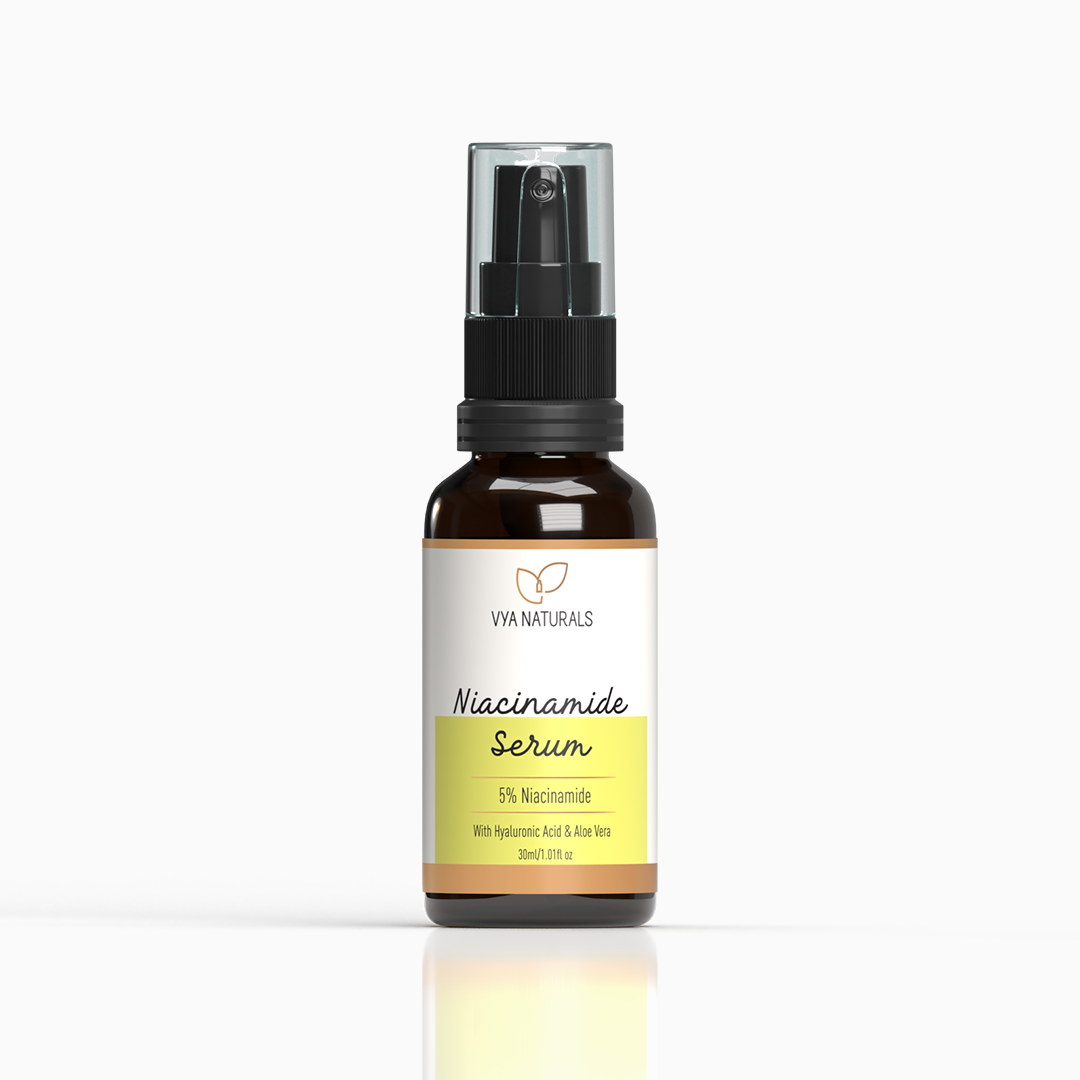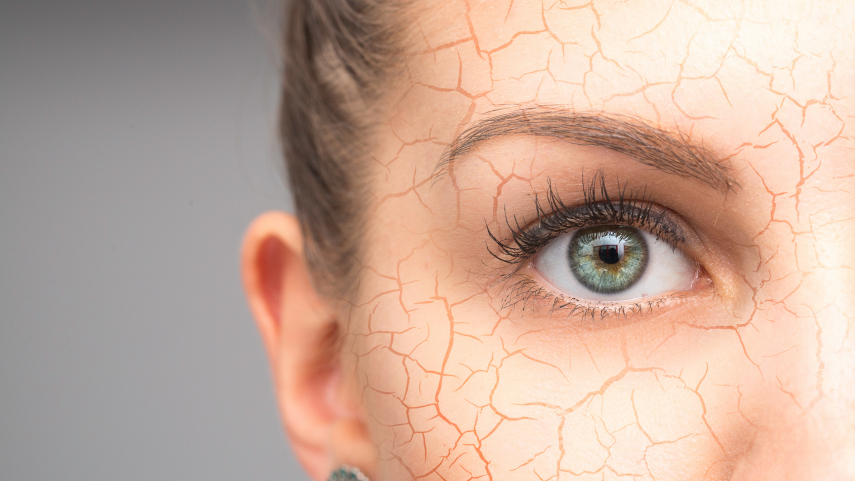Dry skin and dehydrated skin may sound like one and the same thing, but in reality these are two separate issues. Before we proceed with 'how to treat dehydrated skin'. Let's understand the difference between dry skin and dehydrated skin.
DRY SKIN or ALIPIDIC SKIN is a skin type.
- This is skin which does not produce enough oil (sebum).
- As a result the skin's ability to hold on to moisture is compromised.
- This causes your skin to feel tight and dry.
- Dry skin also tends to be more sensitive.
DEHYDRATED SKIN or SKIN WITH TEWL (TRANSEPIDERMAL WATER LOSS) is a skin condition.
- Dehydrated skin lacks water content.
- Skin that produces sufficient (or even excess) oil can be dehydrated due to water loss.
- Dry skin can also be dehydrated as a result of the inability to attract and retain moisture.
WHAT CAUSES DRY SKIN?
Genetics is the biggest reason for dry skin.
You may be born with skin that doesn't produce enough sebum.
Age is the second most common reason for dry skin.
You may find that the “normal’ skin you enjoyed all through your twenties and thirties suddenly starts to produce less oil in your forties and onwards. Hormones play a role in this change.
Lifestyle can also be a contributing factor in dry skin.
This includes the climate to which you are exposed, medications that may cause reduced sebum production as well as use of harsh skincare products.

WHAT CAUSES DEHYDRATED SKIN?
Lifestyle is one of the biggest contributors to dehydrated skin.
Use of harsh skincare products and/or prescription retinoids will cause your skin to lose moisture. Excessive exposure to artificial heating and cooling also causes dehydration.
Age causes our skin barrier to become compromised.
This results in increased transepidermal water loss (TEWL) and dehydration.
Healthy, happy skin needs to have the right balance of sebum (oil) and moisture.
This is a universal truth and applies to all skin types and across all age groups.
Dry skin can be dehydrated; oily skin can be dehydrated; combination or normal skin can be dehydrated.
However by the sheer definition of dry skin, oily skin cannot be classified as dry!
That tight uncomfortable feeling you may experience on your oily skin is a sign that your skin does not have the right amount of water content in the epidermis. Your skin can have high sebum content but low moisture content.
HOW TO TREAT DEHYDRATED SKIN?
Regardless of whether you have dry skin or dehydrated skin, these steps will help you make your skin happier.
Use gentle products in your skincare routine.
Harsh cleansers and toners will cause your skin barrier to get damaged. If you have oily skin you may be tempted to use a cleanser that leaves your skin feeling “squeaky clean”. Instead opt for a gentle cleanser that will clean without stripping your skin of its natural oils. (VYA NATURALS VITAMIN C CLEANSER, AHA BHA FACE WASH).
Invest in an exfoliating toner.
One that hydrates as well as removes dead skin cells. Oily skin should exfoliate a maximum of 2-3 times a week while dry to normal skin will be happy with a once a week session. (VYA NATURALS AHA BHA TONER) Over exfoliation is also an issue for all skin types.
Never leave your skin bare after cleansing.
This increases the chances of your skin losing more moisture to the environment. Follow up immediately with your toner, serum and moisturizer.
Use a hydrating serum below your moisturizer.
Look for serums with amazing humectant properties. A humectant attracts moisture to the skin. Glycerin is a humectant so is Hyaluronic Acid. Hyaluronic Acid is the buzzy humectant your skin never knew it needed - it holds upto 900 times its molecular weight in water! (VYA NATURALS HYALURONIC ACID SERUM).
Do not skip moisturizer even if you have oily skin.
Look for a moisturizer with the right blend of emollients (these soothe and soften the skin), humectants (to attract moisture in the skin) and occlusives (which seal in the moisture). A lightweight gel moisturizer works wonderfully for oily skin and combination skin. An additional occlusive layer of a facial oil helps dry skin stay hydrated and moisturized.
Invest in a humidifier.
So that the moisture content in the air as well as that of your skin stays at optimum levels.
Do not wash your face with overly warm or too cold water.
Water should be at room temperature in the summer or lukewarm in the winter. Excessively hot or cold water strips your skin of its natural oils.
One last comment before we end this guide about how to treat dehydrated skin.
Drinking plenty of water is not the solution to dry or dehydrated skin.
Hydrating yourself internally has its benefits of course.
However our skin is extremely inefficient in receiving water from what we consume as food and drink. Hence topical applications are the way to go to improve your skin's hydration.
DISCLAIMER:
Content of this website is not a substitution for professional medical advice, diagnosis, or treatment. We do NOT replace any relationship that exists, or should exist, between you and a medical doctor or other healthcare professional. Results given in testimonials/reviews are from real people who have used Vya Naturals products, but identical or similar results are not guaranteed. Individual results may vary depending on skin type, sensitivity, lifestyle, age, skincare products combinations, skincare history, as well as how the products are applied and stored.






